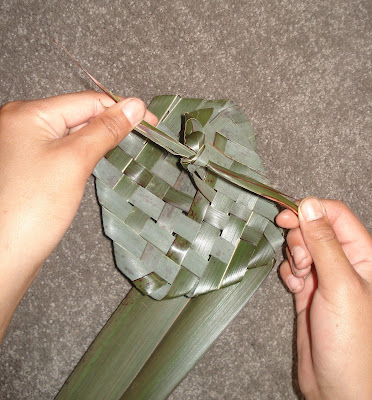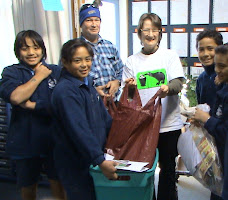
DEEPAVALI, commonly known as DIWALI, is a major Indian festival spread over 5 days that is very significant in Hinduism known as the "Festival of Lights," it symbolizes the VICTORY OF GOOD OVER EVIL and lamps (diyas) are lit as a sign of celebration and hope for mankind.

"Regardless of the explanations one prefers, what the festival of lights really stands for today is a reaffirmation of hope, a renewed commitment to friendship and goodwill, and a religiously sanctioned celebration of the simple — and some not so simple — joys of life."
This year (2008) Deepavali is celebrated over a period of 5 days beginning from the 26th October to the 30th October.
Diwali is one of the most popular and eagerly awaited Hindu festivals around the world. Hindus regard it as a celebration of life and use the occasion to strengthen family and social relationships. For Hindus it is one of the most important festivals, and it is a New Year in some Hindu calendars.

The Deepavali lights represent the time when Shree Raam came back from the forest, and all in Ayodyhya lit lamps to welcome their most beloved Lord back home after fourteen years of exile in the forest. Many do believe that when the lamps are lit this helps Mother Lakshmi find her way into people's homes. Celebrations focus on lights and lamps, particularly traditional dipa or deeya (earthen lamp).

Diwali is a colloquial name used in North India, while the festival is formally called Deepavali in South India. The Sanskrit word Deepavali means an 'array of lights' that stands for victory of brightness over darkness. As the knowledge of Sanskrit diminished, the name was popularly modified to Diwali, especially in northern India. In South India, Diwali does not coincide with the beginning of a new year as South Indian Hindus follow a different calendar, where it falls on the night of the new moon in the month of Kartik (this year this day falls on the 28th October 2008).

Hindus find cause to celebrate this festival for different reasons:
• It commemorates the killing of Narakasura, an evil demon who created havoc and
was killed by Lord Krishna Himself. Before Narakasura's death, he requested a boon
from his mother (Mother Earth), that everyone should celebrate his death with
colorful light.
• According to the Skanda Purana, Mother Parvati observed 21 days of austerity
starting from ashtami of shukla paksha (eighth day of the waxing period of moon) to
get half of the body of her dear husband Lord Shiva. This vrat (austerity) is known
as Kedhara Vrata. Deepavali is the completion day of this austerity. This is the day
Lord Shiva accepted Mother Parvati into the left half of his form and appeared as
Ardharishvara.
• Diwali also celebrates the return of Shree Ramachandra, King of Ayodhya, with his
wife Sita and brother Shree Lakshmanji to Ayodhya from a war in which He killed
the demon king Ravana. People light oil lamps along the way to light their path in the
darkness.
• In Bhavishyottara and Brahma Vaivarta Purana, Diwali is associated with Bali
Maharaja, who is allowed to return to earth once a year.
The Five days of Diwali:
Diwali is celebrated over five days in most of India. All the days except Diwali are named using the designation in the Indian calendar. A lunar half-month is 15 days. Diwali as a newmoon day marks the last day of a 15-day period. Diwali being festival of lights, across India people celebrate it via symbolic diyas or kandils (colorful paper lanterns) as an integral part of Diwali decorations.
1) Dhan-trayodashi or dhan teras (26th October): Dhan means "wealth" and
Trayodashi means "13th day". Thus, as the name implies, this day falls on the 13th day of the second half of the lunar month. It is an auspicious day for shopping. This day is of special importance for traders and business people.
2) Naraka Chaturdasi (27th October): Chaturdasi is the fourteenth day on which
demon Narakasura was killed. (The katha is given below). It signifies the victory of good over evil and light over darkness. In South India, this is the actual day of festivities.
3) Diwali-Amavasya (28th October): The actual day of Diwali, is celebrated on the
third day of the festival, when the moon completely wanes and total darkness sets in the night sky. Hindus wake up way before dawn as early as 4h00 in the morning, have a fragrant oil bath and wear new clothes. They light small lamps all around the house and draw elaborate rangoli (patterns) outside their homes. They perform pujas (prayer) with offerings to Shree Sita-Raam/Radha-Krishna/Lakshmi-Narayana, as He liberated the world from the demon Narakasura on this day. Taking a bath before sunrise, when the stars are still visible in the sky is equivalent to taking a bath in the Ganga River. Hence, when people greet each other in the morning, they ask "Have you performed your Ganga Snaanam?” (Well most of us are not in India so what you can do in this case purchase Ganga Water from your nearest puja shop and in a bucket pour a cap of Ganga water from the bottle and fill the bucket with
normal water and have a bath… it’s the same thing as bathing in Mother Ganga herself). As this is a day of rejoicement, many will have very elaborate breakfasts and lunches and meet family and friends. In the evening, lamps are again lit and Mother Lakshmi is worshipped and offered special dishes. This being a no moon day (New moon/Amavasya), many will offer tarpana (offerings of water and sesame seeds) to their ancestors. This is from the Garuda Purana. Like Christmas in the West, Diwali is very much a time for buying and exchanging gifts.
4) Govardhan Puja or also called Annakut (29th October), is celebrated as the day
Shree Krishna defeated Lord Indradev. For Annakut a mountain of food (normally halva) is decorated symbolizing Govardhan Mountain lifted by Lord Krishna. On this day men present gifts to their wives.
5) Bhayiduj (30th October) — on this day, brothers and sisters meet to express their
love and affection for each other. Most Indian festivals bring together families; Bhaiduj brings together sisters and brothers, and is a significant festive day for them. This festival is ancient, and pre-dates 'Raksha Bandhan' another brother-sister festival being celebrated today.
The celebrations vary in different regions:• In South India, Naraka Chaturdashi is the main day.
• The main festival in North India is on Amavasya evening with Lakshmi Puja which is
followed by lighting of oil lamps around the house.
Three Diwali Kathas…
Three of the Kathas (stories) of Diwali show the triumph of Good over Evil, and tell of the destruction of two monsters that preyed on humanity.
The killing of Narakasura: - Narakasura was the evil king of Pragjyotishpur, near Nepal. He ruled with a reign of terror, abducted 16,000 daughters of the deva, and stole the earrings of Aditi, mother of the devas. The devas asked Lord Krishna for help, and after a mighty battle He killed the demon, freed the girls, and recovered the earrings. The rescue of the 16,000 girls is the origin of the story that Shree Krishna had 16,000 wives. After His victory Lord Krishna returned very early in the morning and was bathed and massaged with scented oils. Taking an early morning bath with oil is still a Diwali tradition. To read the full katha of the Killing of Narakaasura.
The killing of the demon Ravana: - Ravana, who had ten arms and ten heads, was the wicked king of the island of Shree Lanka, who kidnapped the wife of Shree Raam. Shree Raam had been in exile for 14 years because of a disagreement as to whether He or His brother should be the next king in Ayodhya. After a great battle Shree Raam killed Ravana demon and recovered Mother Sita. Shree Raam's return with Mother Sita to Ayodhya and His subsequent coronation as king is celebrated at Diwali. When Shree Raam and Mother Sita first returned to Ayodhya it was a dark moonless night and they couldn't see where they were going. Their people put little lamps outside their houses so that the new king and queen could find Their way, thus beginning the tradition of the festival of lights.
The Katha of Bali Maharaj: - In the Srimad Bhagavatam 8th canto chapters 15-23 narrates the katha of Bali Maharaj and Lord Vamanadeva. Bali Maharaj was born in a demon family and due to his penance he ruled over material creation including Mother Lakshmi. In the absence of Lakshmi Mata the world was deprived of their basic needs and suffered immensely. The devas approached Lord Vishnu who didn’t need much coaxing to incarnate to save the world… the Lord incarnated as the son of Aditi-devi and the great sage Kashyapa Muni. Then the Lord known as Vamana (dwarf) deva approached Bali maharaja for three steps of land which Bali Maharaja immediately agreed despite being asked not to do so by his Guru. The Lord first step covered the entire surface of the world, and by extending His body He covered the entire sky. With His hands He covered all directions, and with His second footstep He covered the entire upper planetary system. Therefore there was no vacant place where He could take His third footstep. The Lord accepted Bali Maharaja’s defeat because he couldn’t deliver on his promise and was sent to planet Sutala. When this
happened Mother Lakshmi and all the Devi's and Deva's were released and order restored. This happened on Diwali day.
A bit of controversy to end. ..many will worry that they cannot take 5 days off from work...you can choose any of the 5 days. Many will choose the 28th but we got to look at the bigger picture and that this is a time for joy and celebrations. We should be proud other religions have one main day while we have 5 main days to celebrate Diwali. It makes you feel great to be a Hindu now.
How to observe this extremely auspicious day:
After you have taken a bath early in the morning and wearing clean clothes go to your prayer place and offer incense, lamp and flowers (all seven times in a clockwise around the picture of Shree Sita-Raam. After that all the food that has been prepared should be offered first to Shree Sita-Raam. Leave the unoffered food before Their Lordships to bless and after about 10 minutes remove from the prayer place and offer that prashad (blessed food) for all to eat.
Many perform Lakshmi Puja on this day. If one likes to perform this puja visit out website and in the ARTILCES block under Vara Lakshmi Puja we have the full puja method explained. But most importantly enjoy these 5 days. During these five days of Deepavali one should not consume any meat.
Thank you for taking time to read this article. We are trying to reach out not only to Hindus but to others of other faiths as well. By compiling and publishing these articles we hope that others will understand what a beautiful and diversified way of life Hinduism (Sanathan Dharma) really is.
Please do visit our Website to receive more free information about our beautiful culture www.h4all.org
Compiled (for the upliftment of Sanatan Dharma – the Eternal Religion)
Narottam Das (South Africa)
Phone (+27) 32 9444 108 or (+27) 82 714 1504
E-mail nd@h4all.org
Mrs Raman's Diwali Pics:

Here are some of the yummy treats our teacher baked for Diwali this year - Recipes coming soon:





























